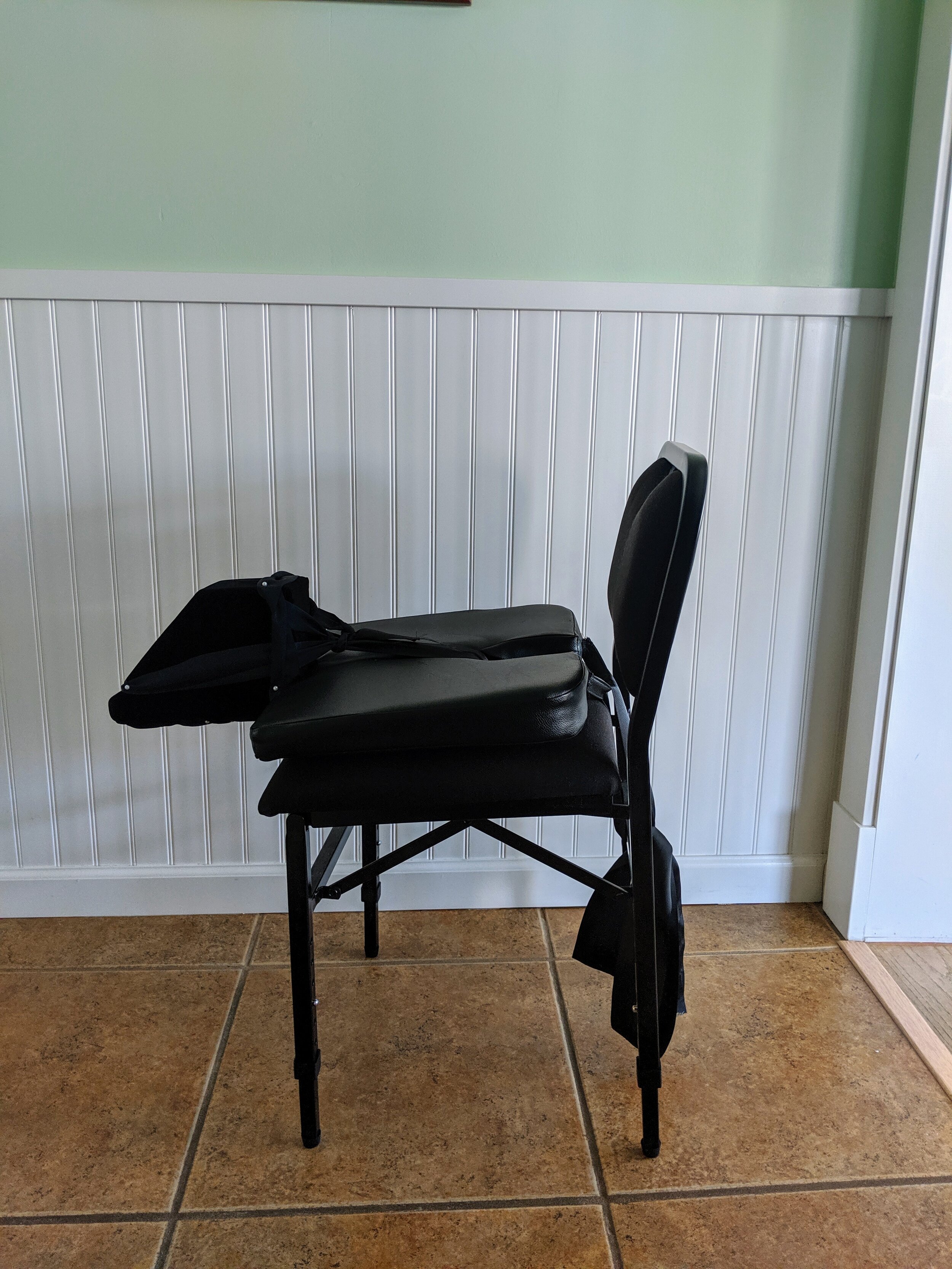Introducing the Cello Horse
/Leading up to this, I did a lot of research on the internet trying to find a solution, or a cellist with a similar disability. I found a lot of information about injuries caused by playing cello and how to prevent them, but I found nothing about someone who simply can’t bend their left arm enough to play.
With the Cello Horse, my knees just touch the sides of the cello, so a standard single endpin anchor didn’t work for me anymore. To further anchor the cello when an endpin anchor is needed, I bought two Xeros endpin anchors and triangulated them at the apex, securing them with two safety pins. It’s a very secure setup and features two endpin placement options.
Most people don’t know that I have a reconstructed left elbow. I shattered my elbow when I was 10 years old, and it was so bad that my prognosis was that it would have to be fused into a bent position for the rest of my life. However, the surgeon did a great job, and I did regain a lot of my range of motion. I now have enough motion to be able to play my musical instruments.
However, I can’t bend my left arm enough to touch my own shoulder. In order to reach the strings on my cello, I’ve always had to angle my cello to the left, twist my lower back to the left and pull my left shoulder backwards as far as it would go. That means I would frequently get tendonitis in my left shoulder, and I knew I’d probably develop back problems down the road if I didn’t change something. It was also very uncomfortable to keep forcing my left elbow into its most bent position possible.
This little device may look confusing, but it’s my little miracle “Cello Horse”, created with the goal of being able to play cello in a balanced sitting position despite my arm’s limitations. It’s the result of a year of thinking, building, and experimenting with different models. Its purpose is to space my cello further away from my body so that I won’t have to bend my left arm as much to play. In a standard playing position, the cello should lean against the musician’s chest, but with this new system, my cello now leans against my velvet Cello Horse. With my Cello Horse, I can sit perfectly straight in a healthy playing position, and the Cello Horse is hidden behind the cello and by my legs. Since it’s attached to a standard seat cushion, it’s portable and can be used with just about any chair.
The materials that I used to make the Cello Horse are:
Black wedge seat cushion
Black yoga foam block
Piece of black velvet material
Long wide black ribbon
Sewing pins
Tape (needle and thread if you prefer to sew)
Electric knife (to cut the foam block to shape)
If you would like detailed instructions on how to make a Cello Horse, email me at: music@christenstephens.com




